Garmin Approach G80 vs Garmin Approach R10: which portable launch monitor is better for golfers?
Garmin have been at the forefront of golf GPS but now they've turned their attention to launch monitors and made them affordable to everyone

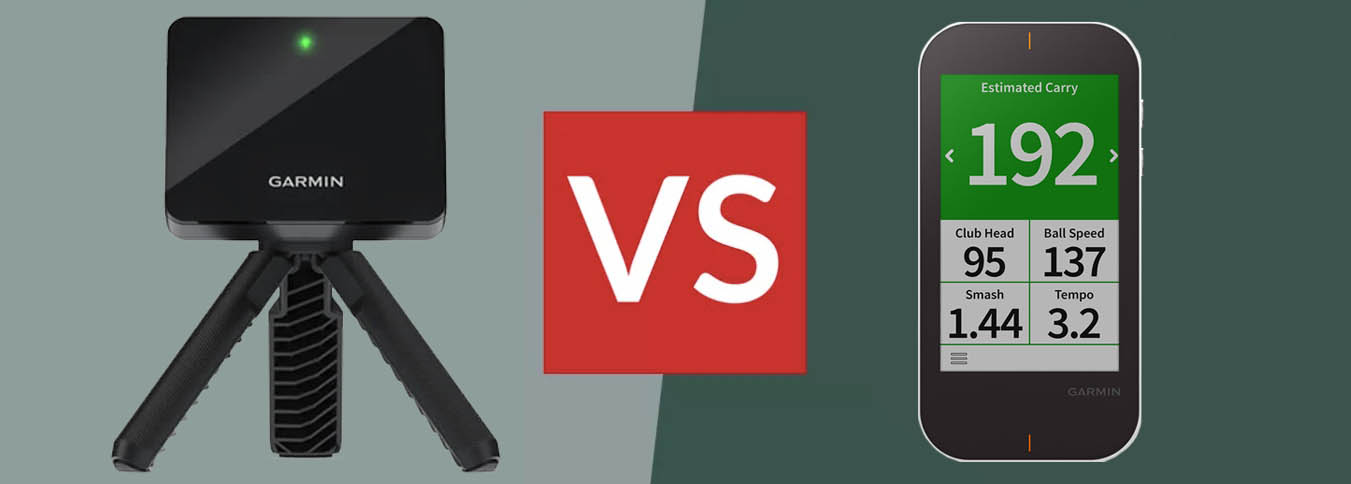
Launch monitors have traditionally been well beyond the budget of the majority of golfers, but not any more! The Approach G80 and the Approach R10 from Garmin actually come in at a similar price point to the best drivers.
These two game changing offerings from Garmin will transform your practice sessions at the range or at home, but how do they stack up against each other and which one should you buy?
Short answer; you should probably buy the R10, although some golfers might get more enjoyment out of the G80. Why is that? Read on and I'll tell you.
• Direct to consumer golf balls
Until recently launch monitors were something only tour pros could afford. If you were lucky your local teaching pro would have access to one that you may occasionally get to use when paying for lessons. For most amateur golfers launch monitors were not an option.
Get all the latest news, reviews, deals and buying guides on gorgeous tech, home and active products from the T3 experts
Even as golf tech became more affordable and accessible to the average golfer, launch monitors were nowhere near as affordable as the best GPS watches or a top quality laser range finder.
Now though? The game has changed and Garmin are at the forefront of these changes. Any golfer can now have a launch monitor as a faithful companion down at the driving range, and although you won't get the same level and accuracy of information that the tour pros are getting from their devices (which cost tens of thousands of pounds), at the very least you will know how far you are hitting your shots.
I’ve been using the Approach G80 for a while so I was keen to see the R10 go head to head with it to see just how superior it is. Because it was obviously going to be superior, of that there was no doubt as the G80 is a 'jack of all trades' type of kit whereas the R10 is a specialist launch monitor designed to be a budget alternative to the really high end models the top pros use.
So I had high expectations of the R10 and while I was far from being disappointed, I admit I wasn’t quite as blown away as I expected to be. There are some issues that will need addressing down the line - and I’m sure they will be as Garmin will be able to tinker with it and upgrade it via software updates - but what you really want to know is whether it is value for money and how does it compare to the G80, so let's get straight into it.
Garmin Approach G80 vs R10: Functionality
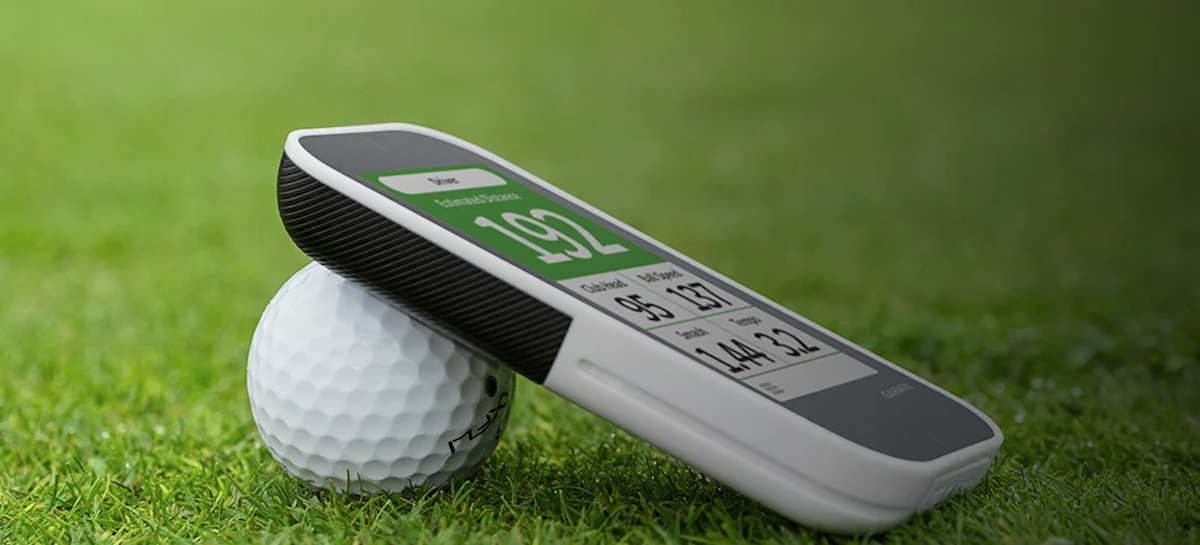
The Garmin Approach G80 is a nifty GPS device that is pre-loaded with over forty thousand golf courses. It comes in a sturdy carry case that clips onto your golf bag and it’s packed with useful functions that will help you navigate your way around the local links. It also doubles up a pocket sized launch monitor, which makes it the first of its kind.
Garmin specialise in golf GPS so you know what you’re going to get on that side of things. The G80 is similar to a high end GPS watch like the Approach S62, but combining it it with launch monitor capability was a great move by Garmin.
The G80 was actually Garmin’s first foray into the field before they followed it up with the R10. As a launch monitor the G80 is quite basic but it is still a lot of fun to use providing you aren’t taking the data too literally.
There’s nothing complicated about the G80 and you can be set up and using it within seconds of arriving at the driving range. You switch it on, select which function you want, place it on the ground (resting on a ball, which fits snugly into the groove on the back) facing your ball and away you go. It really couldn’t be easier to use.
You hit a shot and the G80 immediately gives you your club speed, ball speed, carry distance, total distance, swing tempo and smash factor. I would advise to ignore the total distance figure because even the best simulators can’t accurately predict how far your ball is going to run after landing as there are too many variables.
For instance, is the ground hard or soft? Did your ball land on an upslope or a downslope? A launch monitor can’t know that, so the total distance figure is basically worthless. That isn’t just with the G80; that’s right across the board.
The figure that matters most to your average golfer is carry distance, although club speed and ball speed are also things many will have a keen interest in as more club speed equals more distance. Swinging it faster is very much the in thing in golf currently (I blame Bryson DeChambeau) so any golfer chasing more speed will naturally benefit greatly from a device that can tell them how fast they are swinging.
The G80 will give you that and also features some games and challenges you can try to give your practice more of a purpose and make range sessions less boring. It comes pre-loaded with over 40,000 courses which you can play virtually on the range or at home if you have a practice net.
There's no putting and the G80 will assume that every shot you hit is straight (if only!). It will measure your drive and then give you the distance you have left to the green. Then it will track your next shot and if your distance control is good you'll be on the green and will get points for it.
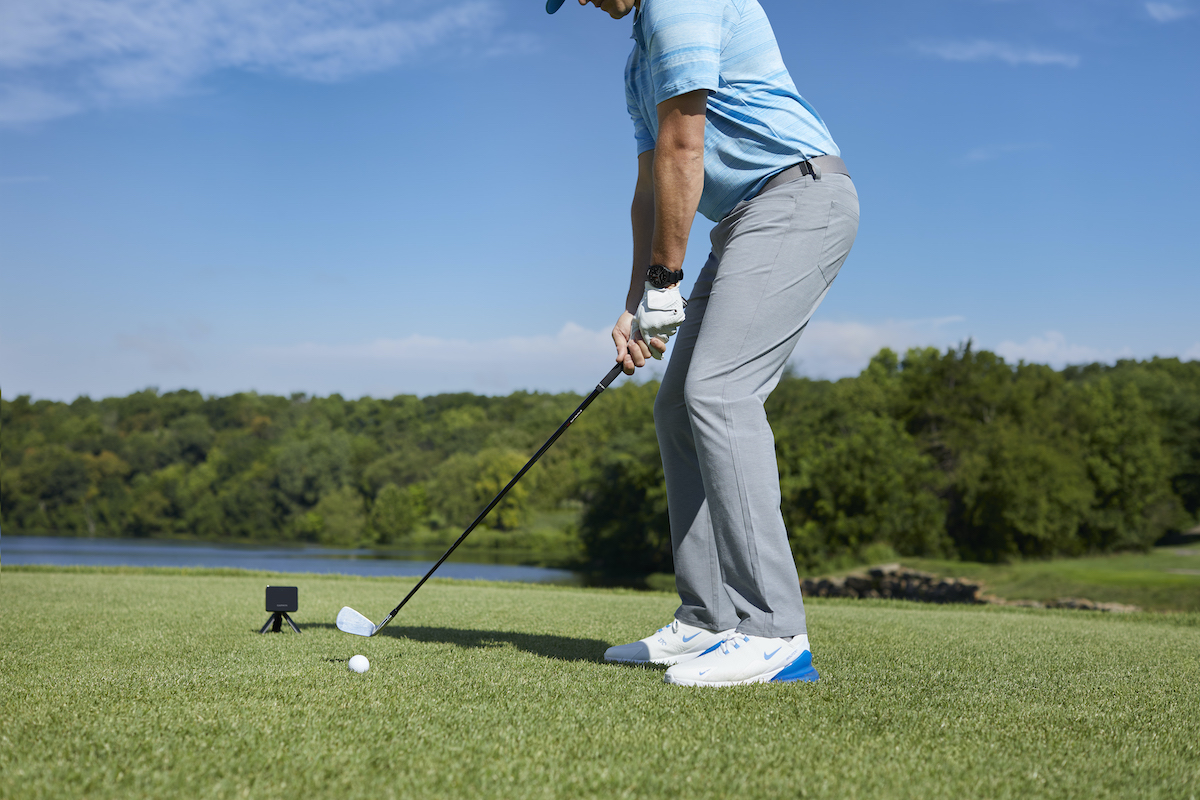
The R10 on the other hand, does not double as a GPS device and its sole purpose is to track shots, although it does so in a different way to the G80. The R10 sits behind the ball and uses Doppler radar technology, whereas the G80 uses radar too but is placed next to the ball.
The R10 is not as straightforward or quick to set up as the G80 because it needs to be connected to your smartphone using the free Garmin Connect app. When connected, the device is placed six feet behind the ball and if used indoors or outside with a practice net, there needs to be at least eight feet between the ball and whatever you are hitting into, such as a screen or a net. To get accurate results it must be perfectly aligned, which is the tricky part (I'll get to this shortly).
Check for the green light on the device before you swing, take your shot and then watch on your phone as the R10 does its thing. You can either watch the shot tracer which will show you the shape and flight of your shot as well as provide you with the basic numbers for distance, or alternatively you can delve deeper into the data and look at spin rate, launch angle, club path and various other things that will have true golf nerds salivating.
In addition to what it can do on the driving range, the R10 offers various simulation features including a multiplayer option that allows you to play against your friends on whatever course you like, as well as a head to head versus other Garmin users. These require a Garmin Premium paid subscription, while you also have the option to connect to TruGolf E6 which is a subscription based app that allows you to play on simulated courses with stunning graphics.
Whereas the G80 doesn’t store any of the data it gives you, the R10 records literally everything. Every single shot you take is saved by default to your ‘range session’ (with all manner of statistics attached to each and every shot) on your smartphone which allows you to chart your progress and compare data from different clubs.
You can delete any bad shots which would skew your averages if left in there, and within no time you will have a full breakdown of every club in your bag and how far you hit it.
A cool feature for those who like showing their golf skills on social media is the video option that will allow you to record your shot on your smartphone, while overlaying all the shot data onto the screen.
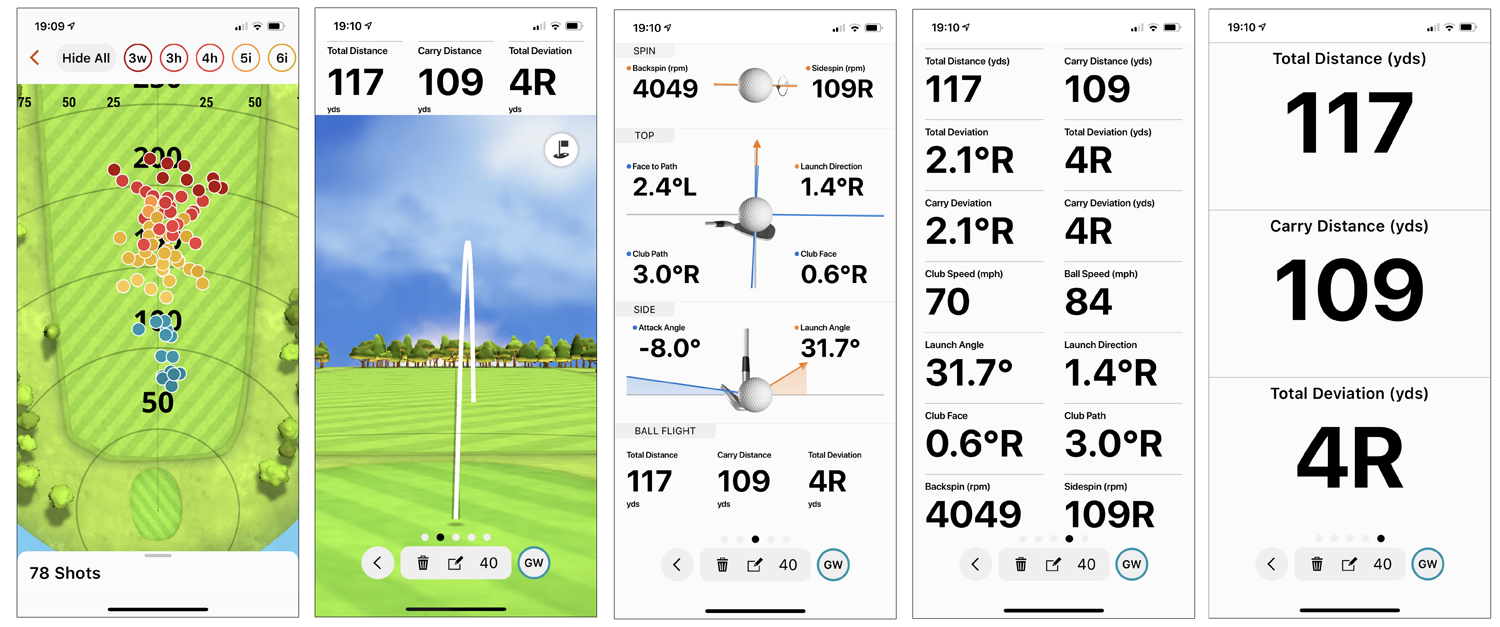
Garmin Approach G80 vs R10: Performance & Accuracy
The accuracy of the R10 is impressive in the categories that most golfers will value most, such as carry distance and clubhead speed. In these areas it actually performs to a level close to market leading launch monitors despite coming at a fraction of the cost.
With other categories such as deviation, spin, club path, club face angle etc the results are more variable and don’t consistently stack up with what you’d get on the high end launch monitors, so the expression “you get what you pay for” comes to mind here. Sometimes the figures are virtually the same as the top of the range machines but other times they can be way off, which basically renders the information fairly useless as you can never be sure if it’s right or not.
There’s a good reason a GC Quad machine costs twenty grand. It is designed for absolute precision and the price reflects that. The R10 won’t give you those precise numbers every time but it is almost always close to spot on in the key areas (carry distance and clubhead speed) which makes it great value for money.
In truth the majority of amateurs won’t understand what they are seeing anyway when they look at some those figures, but with the main categories the R10 pretty much nails it, at least with irons and hybrids (it’s not as reliable with driver), but you must be set up correctly to get the best results.
It does take a little getting used to and if you don’t have the alignment absolutely spot on then the shot tracer can be way off. It isn’t particularly easy to get it right either. You absolutely must have the R10 set up right down the line of your shot otherwise the deviation will be all over the place even though the distance numbers will still be accurate. You may hit a straight shot only to look at your phone and see the ball veering off 50 yards to the right, or you might see a slice showing up as a pull.
If you’re on a driving range this is immediately apparent but if you’re hitting into a practice net then this is a problem because you can’t see your ball flight and may therefore be getting a false picture of your shot shape from the R10.
More problematic is that sometimes you get these false readings even when you are set up correctly. Again, if you are on the driving range and can see your ball flight this is nothing to be concerned about, but it isn’t great if you’re playing simulated golf and are therefore relying on the R10 to show you the direction of your shot.
Most of the time, however, the reading is solid and presumably Garmin will be able to iron out some of these kinks with software and firmware updates and tweaks as we go along. Even as it stands currently though it performs very well for a device in this price range, but only if you get it lined up correctly. If not, it will be telling you that you’re spraying the ball all over the place even when you aren’t.
You need to be aware of that because the first time I used the R10 everything was fine, but the second time the shot tracer was well off and it took a little while for me to figure it out. I didn’t think I’d done anything differently but upon further research I discovered that, firstly, I wasn’t set up down the exact line the device was pointing, and secondly I wasn’t hitting the ball from the exact same spot on the mat.
Both of these things will cause inaccuracy so you need to set up properly and hit a few test shots before recording your session. This isn’t ideal if you are hitting into a net and can’t see your actual ball flight to compare it to the R10’s results, and it isn’t too convenient when you just want a quick set up and to hit some shots. However, the more you use it the easier it is to figure out how to set the alignment correctly.
Be aware that if you move the ball around and aren’t hitting from the same position you’ll get some very inconsistent results. The distance numbers don’t seem to be affected by this but the shot tracer shape and the carry deviation will paint an entirely different picture to what you are seeing in real life.
However, this is something you will figure out with trial and error and when you have it configured properly the R10 is an excellent training aid that can really help you get a feel for your distance control, particularly with irons.
Even when you have everything configured perfectly you will get the occasional outlier where for whatever reason the numbers just go wild. Not necessarily the distance numbers, which I found to be spot on for all but the poorest of strikes which are much harder to pick up, but the direction can sometimes be way off (as in 50 yards off!) and there was one occasion when I recorded 121mph club head speed with a 3 hybrid. Clearly something was amiss there as I’m not Bryson DeChambeau. That figure was out by around 40mph, but this was the exception rather than the norm and most of the time the speed and carry data seems to be bang on the money.
The outliers are very rare and easy to spot so when you get these anomalies you can simply delete them from your saved session, along with any mis-hits you’ve had as they will skew your averages and not give you an accurate reflection of how far you hit each club. When you’ve done that you’re left with an invaluable breakdown of how you perform with each club.
You can also use it for shorter shots, such as chipping, but I found the results were extremely inconsistent and often it wouldn’t pick up the shot at all. Personally that isn’t a problem as I don’t need to track my chip shots on the driving range and I’m not one who plays courses on a simulator. If you are into sim golf then you may be frustrated when your seven yard chip shot shows as carrying twice as far, or vice versa. Again though, this will almost certainly be improved with software updates.
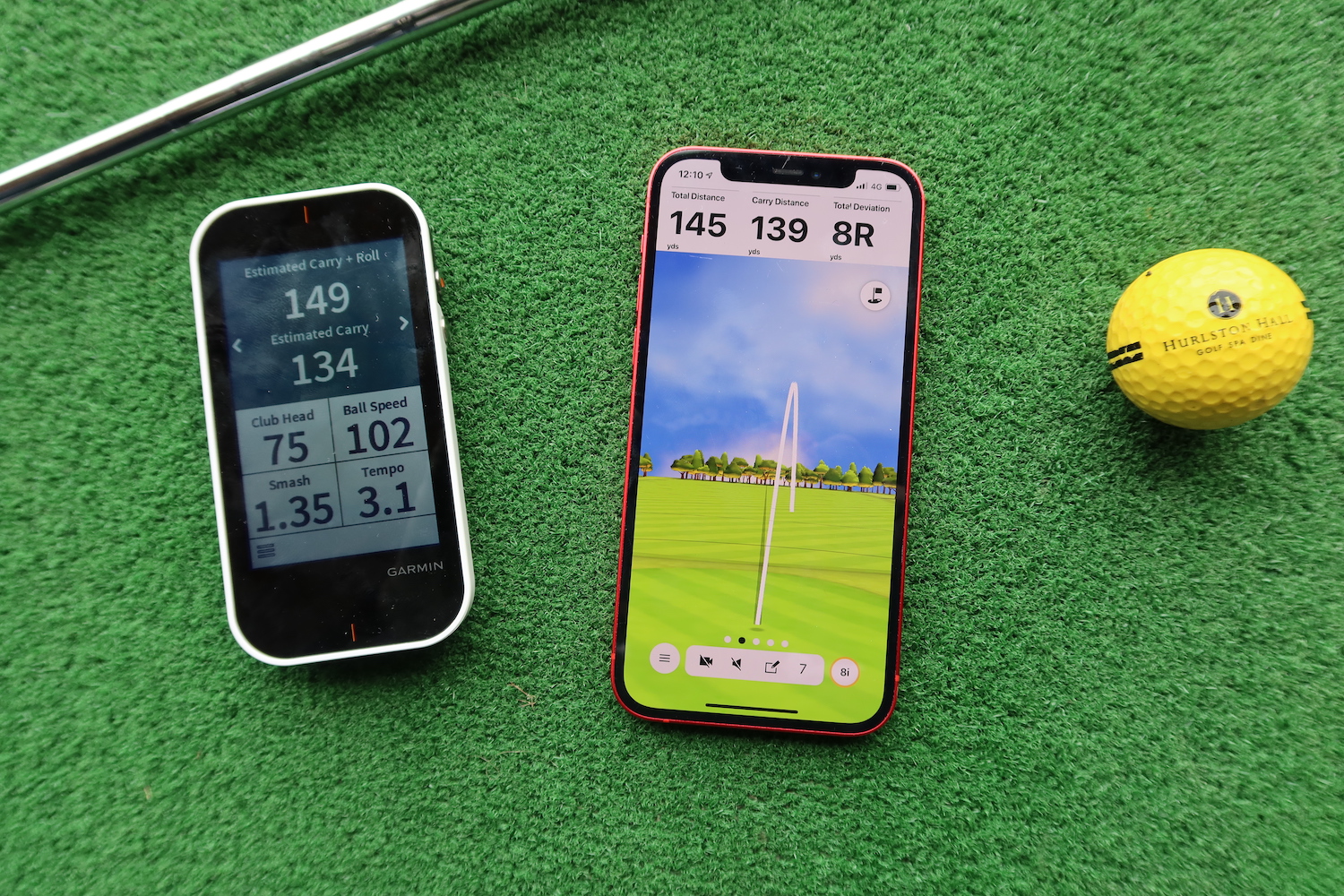
The G80 isn’t as accurate but it is incredibly quick and easy to set up. You just rest it on top of a ball and line it up facing you, and away you go. It couldn’t be more simple, there’s no messing around with it at all. You just switch it on and you’re ready to go. Don’t put too much stock in the numbers you are getting from it though.
When I competed in the TopTracer US Open back in June (and finished inside the world’s top 600 I’ll have you know) I took the G80 along with me and did a little bit of testing against the TopTracer. It was only about a dozen shots with an 8 iron, nothing too extensive and certainly not enough to form any definitive conclusions, but on that small sample size it was apparent that on the shots when I didn’t flush it the numbers were off by quite a bit. Often as much as 11 or 12 yards. On good shots the difference was slightly less but it was always lower than the TopTracer result.
Clearly that isn’t ideal, but it really depends what you are looking to get out of the device. When I compared it with the R10 it was a similar story. The difference between readings was usually between 5-9 yards carry but the one thing I have to say is that even if the figure wasn’t accurate it was at least consistent as the G80 ALWAYS came in at a lower number.
Occasionally it would be as much as 10 or 11 yards but mostly it was between 5-9 yards less than the R10 (see above image, which was a typical example of an 8 iron shot). You can work with that as long as you aren’t using those numbers to gap your irons exactly. If you do then you’ll find yourself overshooting a lot of greens when you get on the course.
The only time the numbers got close between the G80 and the R10 was when I got down to gap wedge and sand wedge. Anything above that saw the 5-9 yard variance, but for whatever reason, with the wedges the figures were almost identical.
The R10 occasionally struggled with bad strikes but at least it could recognise them. The shot tracer will show that you didn’t get it off the ground, or that you caught it heavy and it only went 60 yards. The G80 struggles badly with poorly struck shots but personally I don’t see that as an issue as you don’t really need to know those figures anyway. You know you've hit it bad, you don't need your nose rubbed in it.
Both devices are USB charged and have excellent battery life, and both come with a smart carry case.
Garmin Approach G80 vs R10: Price and availability
The Garmin G80 has come down in price since the launch of the R10 and you can pick one up for as little as £389 now from some online retailers in the UK. It isn't as widely available as it was when first launched though so don't leave it too late if you're thinking of buying.
The R10 on the other hand is readily available from all major golf retailers and is priced at £529 in the UK and $599 in the USA.
• Buy Approach G80 for £449 from Garmin UK
• Buy Approach G80 for $499 from Garmin USA
• Buy Approach R10 for £529 from Garmin UK
• Buy Approach R10 for $599 from Garmin USA
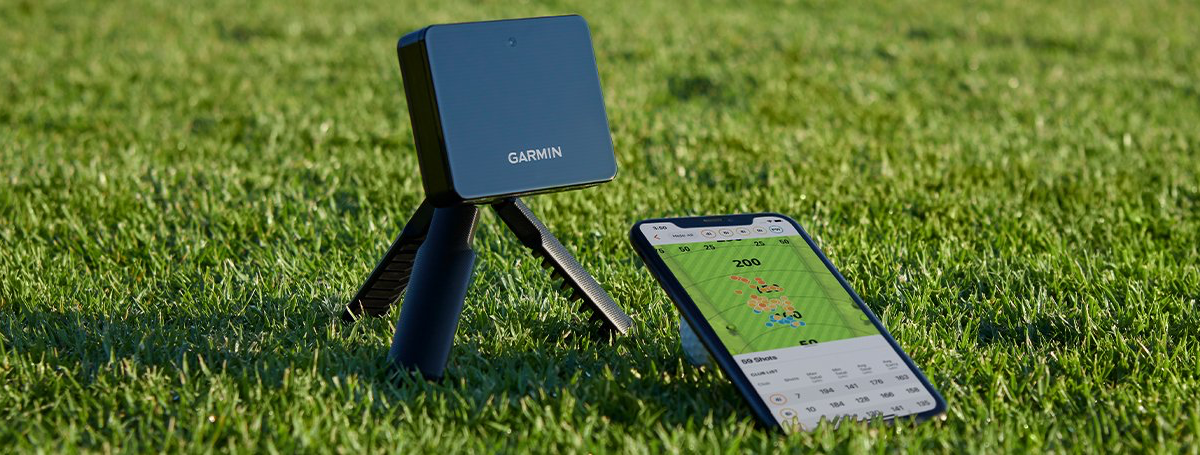
Garmin Approach G80 v R10 - A professional’s view
When I first pulled out the R10 at my local range (Hurlston Hall, Ormskirk), one of the club pros, Danny Whitelaw, noticed it and asked me what I thought of it. I hadn’t used it at this point so had no opinion on it, but Danny was effusive in his praise having tested it the week before against their industry leading Foresight Sports GC Quad launch monitor.
This is what Danny said about the R10;
“One of our members brought one in last week and we were curious how it would stand up to the GC Quad. We were all really surprised because the distance and ball speed numbers were more or less spot on. There was very little difference really. I know all of my numbers anyway so even without putting it up against the ‘Quad’ I could tell the data was accurate.”
Danny added “We get people coming in here with all kinds of gadgets and I generally don’t bother with most of them, but I was so impressed with this one I ordered one straight away. As well as using it myself I can also use it to record data for my students after they’ve had lessons with me”.
I asked Danny if he had used the G80 and if so what were his impressions? “It isn’t as accurate as the R10 but it gives you consistent numbers. It’s good for measuring clubhead speed and smash factor but the biggest drawback is that it struggles with mis-hit shots. You might hit one along the ground and it will tell you it carried 120 yards because it can’t really record really poor strikes.”
Update: I caught up with Danny again recently to ask how he was getting on with his newly acquired R10. His response? "It's great, I'd give it nine out of ten".
Garmin Approach G80 v R10 - Which one should you buy?
So to recap; the G80 is a fun, pocket sized device that is extremely easy and quick to set up and it’s a fun companion at the driving range. It isn't much use indoors because because it has no way of knowing if you’ve hit the ball straight or not. While it is not the most accurate device out there for distances, it is consistent and the clubhead speed function can be very helpful for golfers chasing distance. Given that it also doubles as an excellent GPS device it is great value at the price and I've enjoyed using it.
The R10 meanwhile, is more complex and aimed at the golfer who wants to delve deep into the analytical side of their game but cannot afford to spend thousands on a high end launch monitor. If you have the space to set up a net you can use the R10 to create your very own home simulator and play any course in the world, just don’t put too much stock in the results as it isn’t entirely reliable (not yet anyway, those software updates will hopefully help though), especially when using driver.
Which one you buy really just depends on what you want from it. Both will make your time at the range or at home using your net more enjoyable and, if used correctly, more productive. The G80 is a quicker set up and easier to use but the R10 is much more visual and brings far more gameplay options to the table.
You’ll undoubtedly get more accuracy from the R10 though so that’s the best choice if you want to know exactly how far you are hitting your irons. For the price, you really can’t go wrong with either, but the R10 is particularly great value as, quite frankly, it would still be worth it even at double the cost.

Dave is a distinctly average golfer with (fading) aspirations to be so much more than that. An avid collector of vintage Ping putters and the world's biggest Payne Stewart fan, Dave turned his front garden into a giant putting green to work on the weakest area of his game, but sadly to date he has seen no improvement. In addition to his work reviewing golf gear for T3, Dave is also the founder and editor of Bang Average Golf TV website.